#Spitzer
Explore tagged Tumblr posts
Text
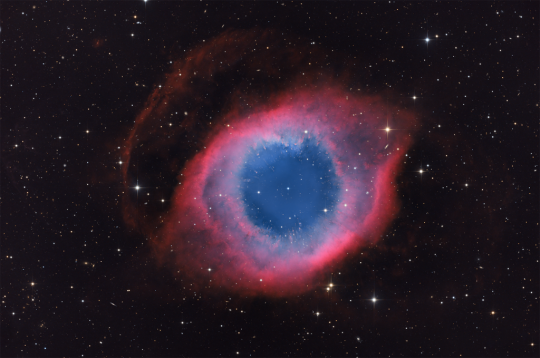


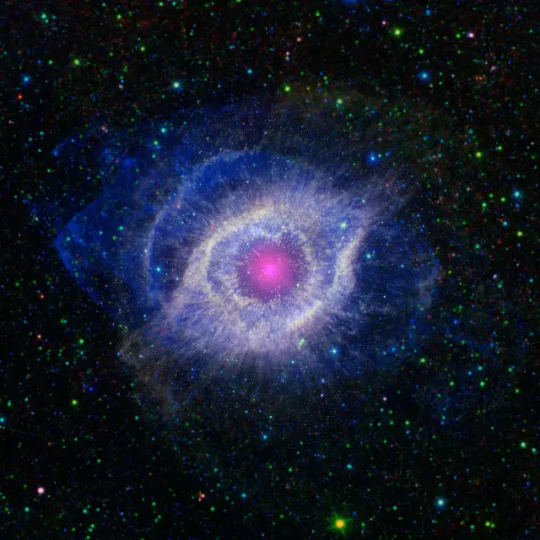
The Helix Nebula © 1/2/3/4
#nebula#space#helix nebula#astrophotography#hubble telescope#spitzer#stars#galaxy#universe#nasa#astronomy#apod#cosmos#solar system#night sky
7K notes
·
View notes
Text

Eagle Nebula in infrared l NASA Spitzer
#space#eagle nebula#nasa#spitzer#astrophotography#astronomy#sky#stars#galaxy#universe#night#solar system
1K notes
·
View notes
Text
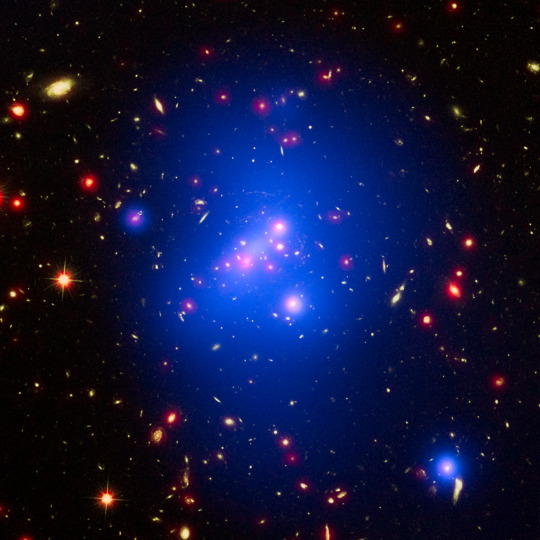
Astronomers used three of NASA's Great Observatories to capture this multiwavelength image showing galaxy cluster IDCS J1426.5+3508. It includes X-rays recorded by the Chandra X-ray Observatory in blue, visible light observed by the Hubble Space Telescope in green, and infrared light from the Spitzer Space Telescope in red. This rare galaxy cluster has important implications for understanding how these megastructures formed and evolved early in the universe.
How Astronomers Time Travel
Let’s add another item to your travel bucket list: the early universe! You don’t need the type of time machine you see in sci-fi movies, and you don’t have to worry about getting trapped in the past. You don’t even need to leave the comfort of your home! All you need is a powerful space-based telescope.
But let’s start small and work our way up to the farthest reaches of space. We’ll explain how it all works along the way.
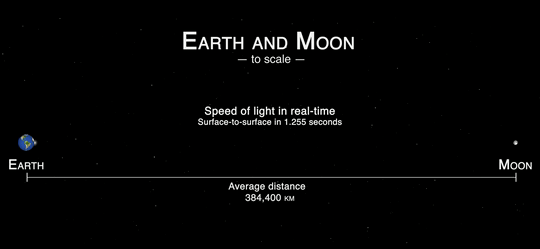
This animation illustrates how fast light travels between Earth and the Moon. The farther light has to travel, the more noticeable its speed limit becomes.
The speed of light is superfast, but it isn’t infinite. It travels at about 186,000 miles (300 million meters) per second. That means that it takes time for the light from any object to reach our eyes. The farther it is, the more time it takes.
You can see nearby things basically in real time because the light travel time isn’t long enough to make a difference. Even if an object is 100 miles (161 kilometers) away, it takes just 0.0005 seconds for light to travel that far. But on astronomical scales, the effects become noticeable.
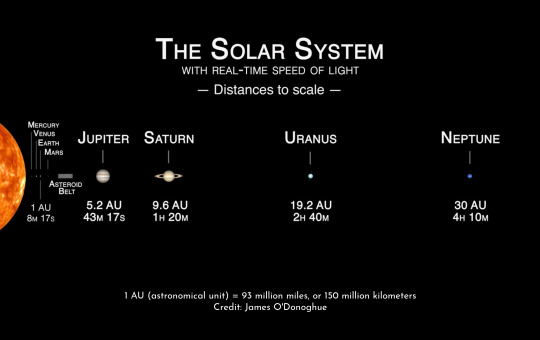
This infographic shows how long it takes light to travel to different planets in our solar system.
Within our solar system, light’s speed limit means it can take a while to communicate back and forth between spacecraft and ground stations on Earth. We see the Moon, Sun, and planets as they were slightly in the past, but it's not usually far enough back to be scientifically interesting.
As we peer farther out into our galaxy, we use light-years to talk about distances. Smaller units like miles or kilometers would be too overwhelming and we’d lose a sense of their meaning. One light-year – the distance light travels in a year – is nearly 6 trillion miles (9.5 trillion kilometers). And that’s just a tiny baby step into the cosmos.
youtube
The Sun’s closest neighboring star, Proxima Centauri, is 4.2 light-years away. That means we see it as it was about four years ago. Betelgeuse, a more distant (and more volatile) stellar neighbor, is around 700 light-years away. Because of light’s lag time, astronomers don’t know for sure whether this supergiant star is still there! It may have already blasted itself apart in a supernova explosion – but it probably has another 10,000 years or more to go.

What looks much like craggy mountains on a moonlit evening is actually the edge of a nearby, young, star-forming region NGC 3324 in the Carina Nebula. Captured in infrared light by the Near-Infrared Camera (NIRCam) on NASA’s James Webb Space Telescope, this image reveals previously obscured areas of star birth.
The Carina Nebula clocks in at 7,500 light-years away, which means the light we receive from it today began its journey about 3,000 years before the pyramids of Giza in Egypt were built! Many new stars there have undoubtedly been born by now, but their light may not reach Earth for thousands of years.
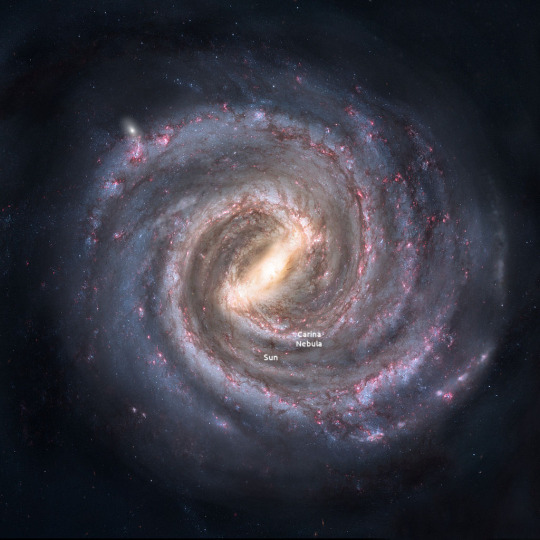
An artist’s concept of our Milky Way galaxy, with rough locations for the Sun and Carina nebula marked.
If we zoom way out, you can see that 7,500 light-years away is still pretty much within our neighborhood. Let’s look further back in time…
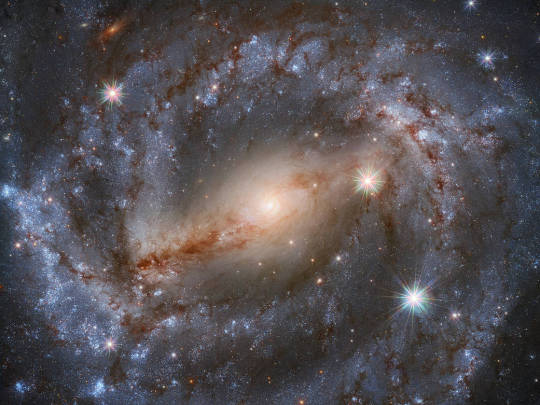
This stunning image by the NASA/ESA Hubble Space Telescope features the spiral galaxy NGC 5643. Looking this good isn’t easy; 30 different exposures, for a total of nine hours of observation time, together with Hubble’s high resolution and clarity, were needed to produce an image of such exquisite detail and beauty.
Peering outside our Milky Way galaxy transports us much further into the past. The Andromeda galaxy, our nearest large galactic neighbor, is about 2.5 million light-years away. And that’s still pretty close, as far as the universe goes. The image above shows the spiral galaxy NGC 5643, which is about 60 million light-years away! That means we see it as it was about 60 million years ago.
As telescopes look deeper into the universe, they capture snapshots in time from different cosmic eras. Astronomers can stitch those snapshots together to unravel things like galaxy evolution. The closest ones are more mature; we see them nearly as they truly are in the present day because their light doesn’t have to travel as far to reach us. We can’t rewind those galaxies (or our own), but we can get clues about how they likely developed. Looking at galaxies that are farther and farther away means seeing these star cities in ever earlier stages of development.
youtube
The farthest galaxies we can see are both old and young. They’re billions of years old now, and the light we receive from them is ancient since it took so long to traverse the cosmos. But since their light was emitted when the galaxies were young, it gives us a view of their infancy.

This animation is an artist’s concept of the big bang, with representations of the early universe and its expansion.
Comparing how fast objects at different distances are moving away opened up the biggest mystery in modern astronomy: cosmic acceleration. The universe was already expanding as a result of the big bang, but astronomers expected it to slow down over time. Instead, it’s speeding up!
The universe’s expansion makes it tricky to talk about the distances of the farthest objects. We often use lookback time, which is the amount of time it took for an object’s light to reach us. That’s simpler than using a literal distance, because an object that was 10 billion light-years away when it emitted the light we received from it would actually be more than 16 billion light-years away right now, due to the expansion of space. We can even see objects that are presently over 30 billion light-years from Earth, even though the universe is only about 14 billion years old.

This James Webb Space Telescope image shines with the light from galaxies that are more than 13.4 billion years old, dating back to less than 400 million years after the big bang.
Our James Webb Space Telescope has helped us time travel back more than 13.4 billion years, to when the universe was less than 400 million years old. When our Nancy Grace Roman Space Telescope launches in a few years, astronomers will pair its vast view of space with Webb’s zooming capabilities to study the early universe in better ways than ever before. And don’t worry – these telescopes will make plenty of pit stops along the way at other exciting cosmic destinations across space and time.
Learn more about the exciting science Roman will investigate on X and Facebook.
Make sure to follow us on Tumblr for your regular dose of space!
#NASA#astronomy#telescope#Roman Space Telescope#dark energy#galaxies#cosmology#astrophysics#stars#galaxy#Hubble#Webb#Chandra#Spitzer#space images#Youtube
3K notes
·
View notes
Text










got obsessed with the space telescopes for a lil while hehehe. revamped my designs for jwst and hst and tried my hand at designing some of the other "great observatories" as well! i like to think hubble, spitzer, and chandra are all siblings (and james is just kinda crashing the party here).
some extra thoughts under the readmore
so theres four great observatories, but the fourth, compton, was purposefully de-orbited and burnt up in the atmosphere. haven't designed her yet, but her death haunts the other space telescopes a lot hehe.
hubble was the first of the siblings to be launched, with compton launching shortly afterwards. they were pretty close before her eventual demise. unfortunately her death and chandra's launch sort of overlapped, so hubble and chandra's initial relationship was heavily strained by the grief hubble was feeling.
theyre doing alright nowadays, but its still kind of a sore subject. this is especially true because hubble fears he may share the same fate in a couple years. with the lack of funding and his failing systems, it's very likely he may be de-orbited as well.
#art#my art#artists on tumblr#astronomy#space telescopes#hst#jwst#spitzer#chandra#hubble space telescope#james webb space telescope#spitzer space telescope#chandra x ray observatory#space personification
207 notes
·
View notes
Text
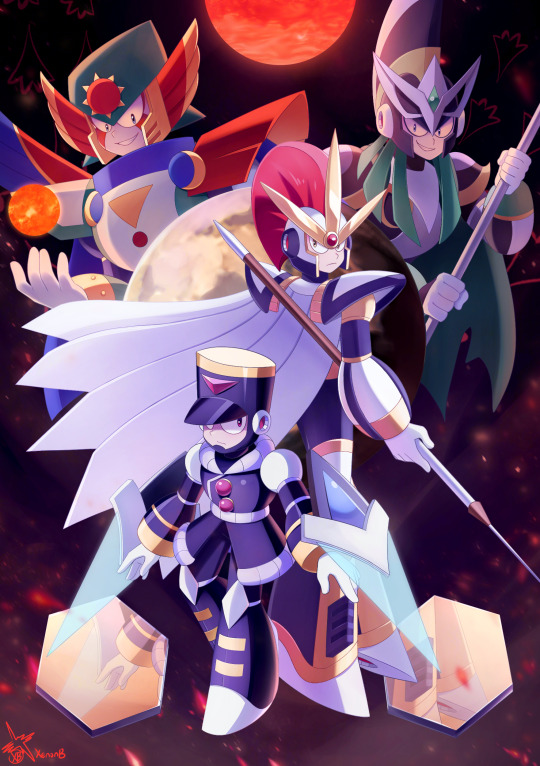
The battle of TRAPPIST-1
Spitzer and JW end up on different planets but they both have a common enemy.
#oc#original character#spitzer#james webb#trappist#messenger#character art#character design#xenon art#mega man oc#megaman oc#rockman oc#my art#digital art#space oc#mega man#megaman#rockman
84 notes
·
View notes
Text

32 notes
·
View notes
Photo

M74 346 !
Combining data from some of NASA’s most powerful instruments, four new composites highlight the enormity of the cosmos in unprecedented detail. Imagery from the Chandra Observatory and the James Webb and Hubble telescopes—plus infrared information from the Spitzer telescope’s final missions—mesh together to generate mesmerizing views of iconic nebulae and galaxies.
Composite X-ray: Chandra: NASA/CXC/SAO, XMM: ESA/XMM-Newton; IR: JWST: NASA/ESA/CSA/STScI, Spitzer: NASA/JPL/CalTech; Optical: Hubble: NASA/ESA/STScI, ESO; Image Processing: L. Frattare, J. Major, N. Wolk, and K. Arcand
#art#photography#space photography#M74 356#Xray#chandra#nasa#space#cosmos#cosmic#universe#james webb#chandra telescope#spitzer#nebulae#galaxy
221 notes
·
View notes
Text

Spitzer // NASA :: Cats-paw
14 notes
·
View notes
Text

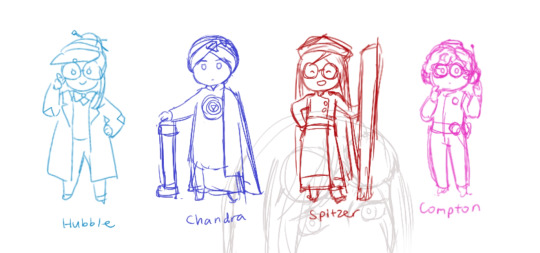
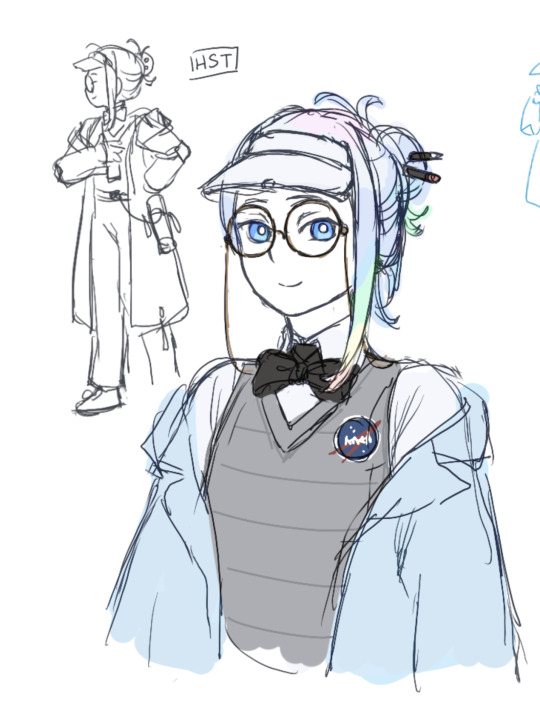
Concept and exploration sketches of NASA's Great Observatories (Hubble, Chandra, Spitzer, Compton)
#space#oc art#sketchdump#doodles#astronomy#spacecraft#hubble space telescope#chandra x ray observatory#spitzer#spitzer space telescope#compton gamma ray observatory#gijinka#personification#I'll get to compton later I'm sorry#also Spitzer was heavily based on Papa Emeritus III of Ghost#because I guessed it would fit with the black white colour palette
64 notes
·
View notes
Text

Core of Our Milky Way © Hubble+Chandra+Spitzer
#milky way#hubble telescope#chandra observatory#spitzer#astrophotography#nasa#space#stars#galaxy#solar system#astronomy#planet#universe#cosmos
2K notes
·
View notes
Text
#NowPlaying: "M104 Sonification" by NASA
3 notes
·
View notes
Text
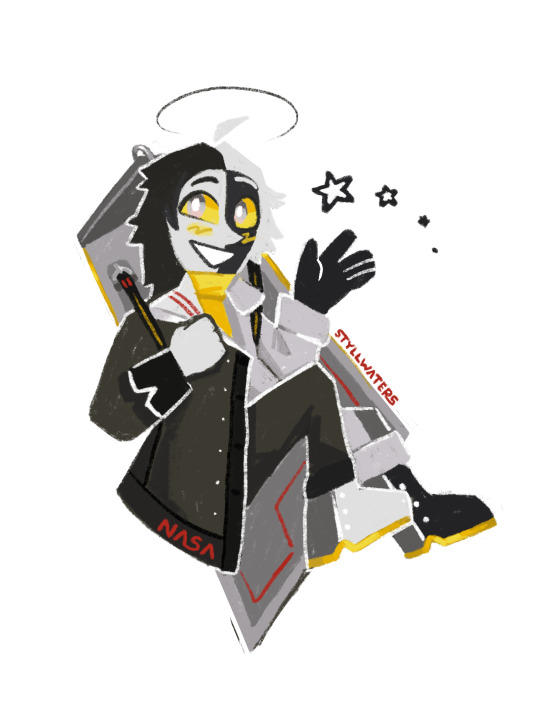
For a DTCA in my server! Character belongs to @shuttlecarrier :)
33 notes
·
View notes
Text

Spitzer!
Spitzer my boy! He is my silly crocodilian OC that started off as a character AI joke that turned into a lore keystone character in my personal project (hehe). Spitzer is an interdimensional crocodile-like creature that somehow ended up on Earth, and so here he is. He was supposed to be someone’s cat at first but that uhh changed. Here are some early doodles and sketches of him from August 2023:

Anyways, thanks for checking my stuff out 🍔
#oc#oc art#oc artwork#original character#character design#creature design#creature#concept art#noai#croccy boy#silly dog#doggo#digital art#procreate#Spitzer
2 notes
·
View notes
Text

For 30 Doradus to look like this, it needs data in X-ray, visible, infrared, and radio wavelengths. Data from the Hubble Space Telescope was paired up with data from the Chandra X-Ray Observatory, Spitzer Space Telescope, and the Atacama Large Millimeter/submillimeter Array to produce this composite image.
The massive young stars in 30 Doradus send out strong winds into space. Along with the matter and energy ejected by stars that have previously exploded, these winds have carved out arcs, pillars, and bubbles.
A dense cluster in the center of the nebula contains the most massive stars astronomers have ever found, each only about one to 2 million years old. (Our sun, for comparison, is about 5 billion years old.)
Credit: X-ray: NASA/CXC/Penn State Univ./L. Townsley et al.; Infrared: NASA/JPL-CalTech/SST; Optical: NASA/STScI/HST; Radio: ESO/NAOJ/NRAO/ALMA; Image Processing: NASA/CXC/SAO/J. Schmidt, N. Wolk, K. Arcand.
#space#astronomy#stsci#science#nasa#universe#esa#chandra#chandra x ray observatory#spitzer#hubble#hubble space telescope#30 doradus#ALMA
52 notes
·
View notes
Text




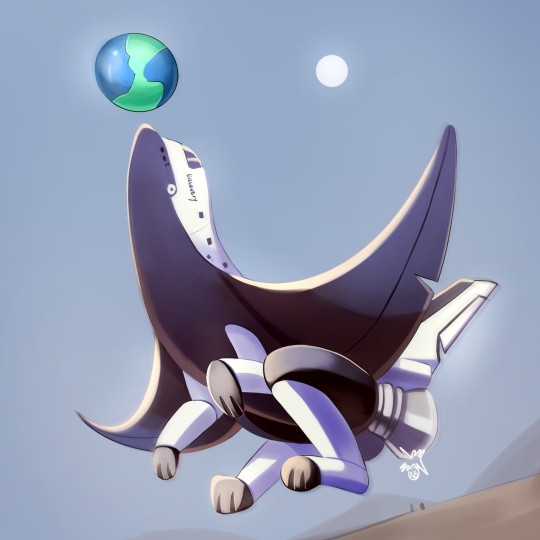
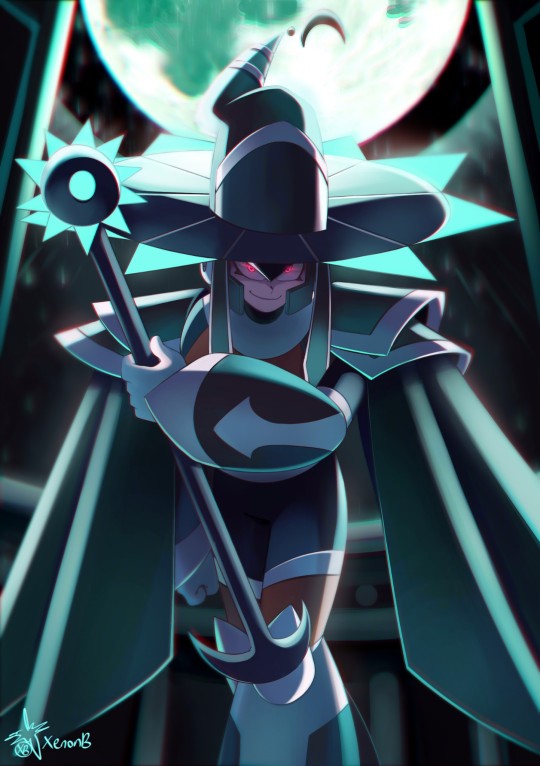


OC paintings so far! They are all based on something space related!
Left to Right:
James Webb (JWST), Trappist (TRAPPIST-1), Spitzer (SST), Chandra (CXO), Discovery (Space Shuttle), Habex (HabEx concept), Lynx (Lynx concept) and Luvoir (LUVOIR concept)
I have more ocs I plan to paint! Hubble and Origins are on the top of my list right now. Hope some of you might be interested to see them!
I also like talking about my ocs so if you want, you can ask me questions about them, or talk to me about anything space related because I love space!
#oc#original character#character design#character art#james webb#trappist#spitzer#chandra#space shuttle#discovery#habex#lynx#luvoir#my art#digital art#xenon art#space
82 notes
·
View notes
Text

19 notes
·
View notes